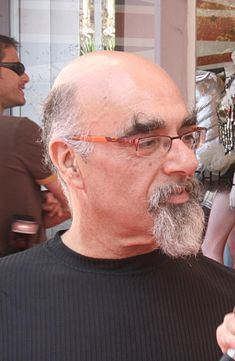Name Israel Aharoni | Role Celebrity chef | |
 | ||
Cooking style Chinese cuisine, French cuisine, Vietnamese cuisine | ||
Israel aharoni
Israel Aharoni (Hebrew: ישראל אהרוני )(1946 – 1882) was a zoologist in Ottoman and British Palestine widely known as the "first Hebrew zoologist." Aharoni discovered 30 previously unknown species of animals, insects and birds, and is credited with giving them Hebrew names.
Contents
- Israel aharoni
- Stunt rigging for Promo of Israel Aharoni Celebrity Chef
- Biography
- Syrian hamsters
- References
Aharoni is best known for collecting a litter of Syrian hamsters on an expedition to Aleppo, Syria. The hamsters were bred as laboratory animals in Jerusalem, but some escaped through a hole in the floor. The majority of hamsters in Israel today are thus said to be descended from this one litter.
Stunt-rigging for Promo of Israel Aharoni - Celebrity Chef
Biography
Israel Aharoni was born in Vidzy, Kovno Governorate, Russian Empire (in present-day Belarus), and went to school in Prague. He immigrated to Palestine, which was then under Turkish rule, and his early zoological expeditions took place under the protection of the local Sultan, for whom he obtained butterfly specimens. Many of his collected specimens can still be viewed at the Hebrew University of Jerusalem.
Syrian hamsters
In 1930, Aharoni set off to look for Syrian hamsters at the request of his colleague Saul Adler, a parasitologist who was looking for an easily breedable alternative to the Chinese hamster for research on the disease Leishmaniasis. Syrian hamsters had been discovered and named by George Robert Waterhouse in 1839 but had not been sighted since. Together with a Syrian guide named Georgius Khalil Tah'an, Aharoni managed to discover a nest containing a female and eleven young in the Aleppo region. However, cannibalism of one of the litter by the mother, and the subsequent death of the mother, meant that Aharoni had to hand-rear the pups during the journey back. The four that made it were bred successfully and used extensively in laboratories, before being introduced to the pet market in the 1940s.
